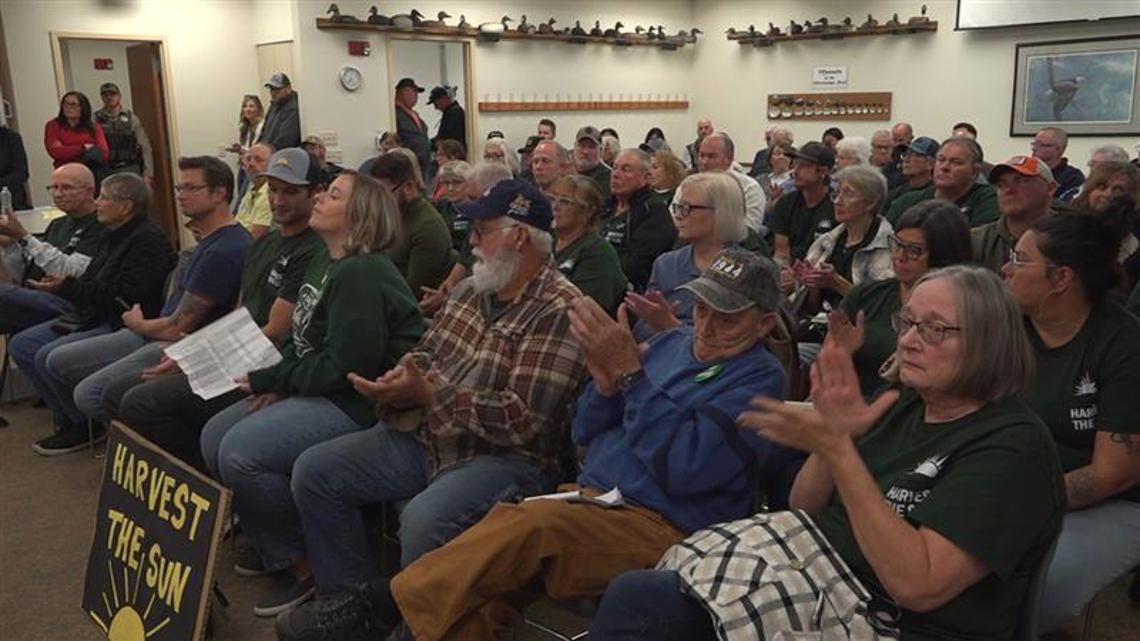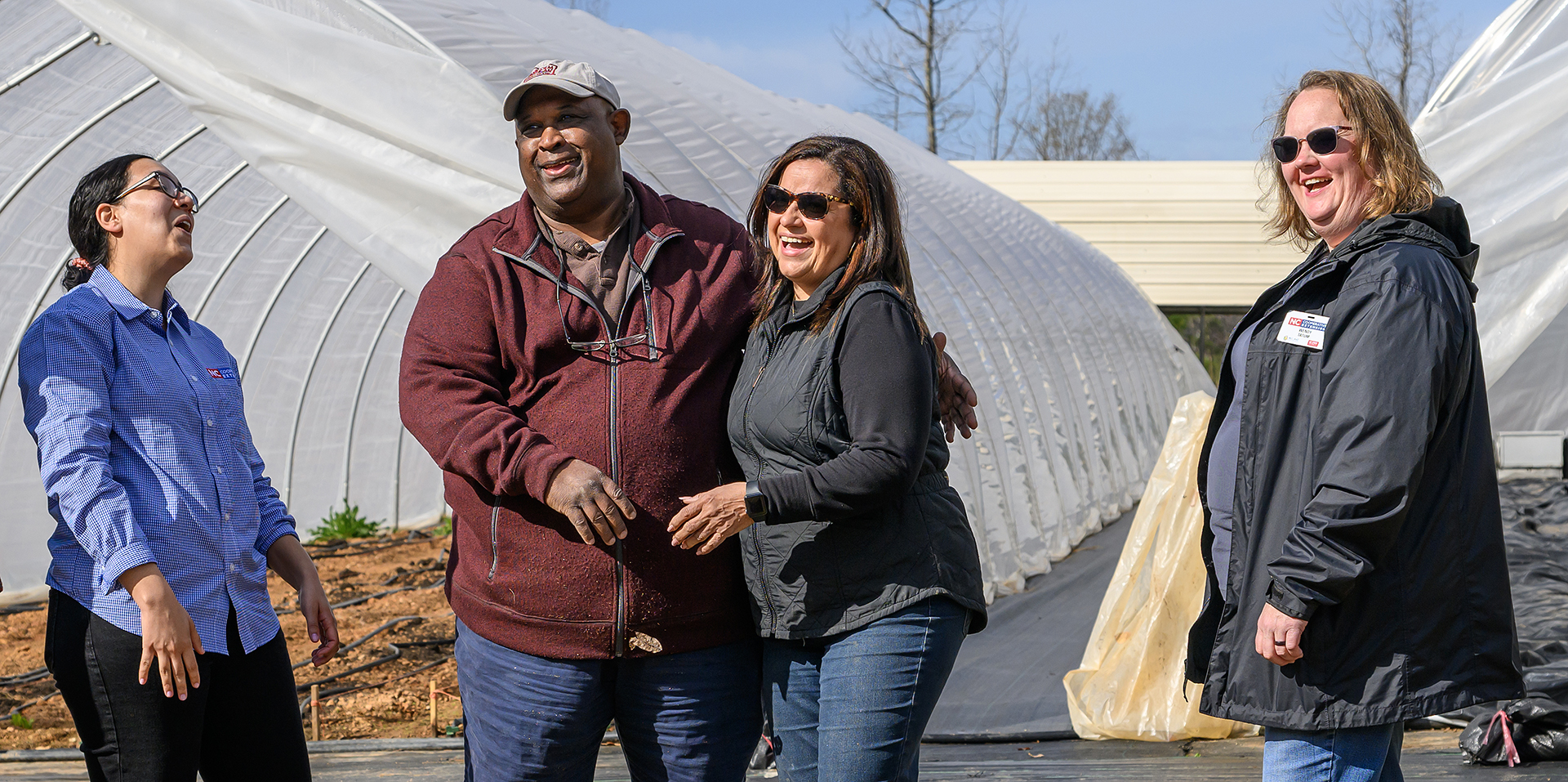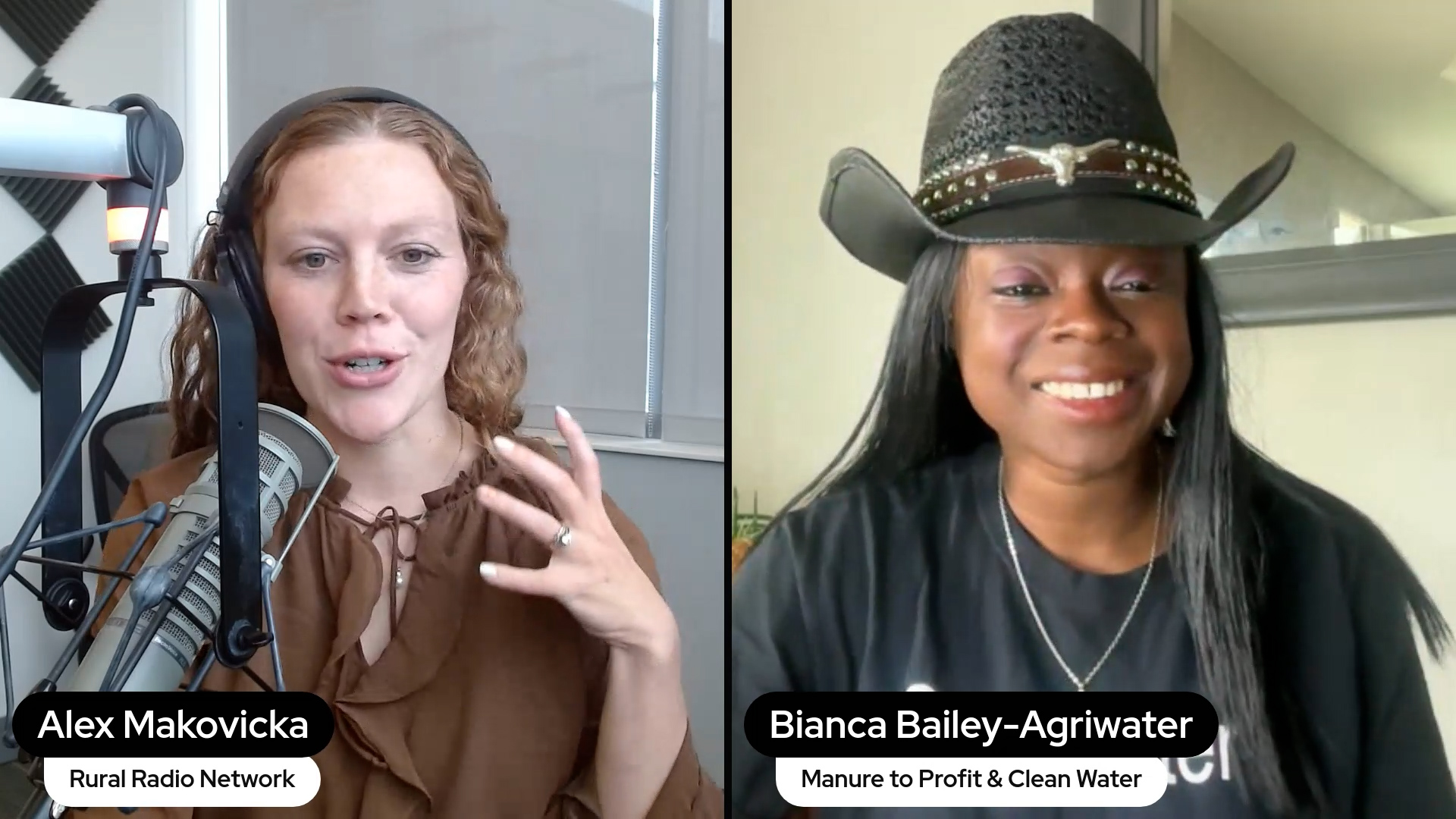Muscatine County approves solar farm development – WQAD

Report on the Two-County Solar Farm Project and its Alignment with Sustainable Development Goals
1.0 Project Overview
A major renewable energy initiative has received preliminary approval in Muscatine County, Iowa. The project, developed by California-based Orion Renewables, involves the construction of a large-scale solar farm. This report details the project’s specifications and analyzes its significant contributions to several United Nations Sustainable Development Goals (SDGs).
- Investment: $2.1 billion
- Generation Capacity: 1,100 megawatts
- Geographic Footprint: Approximately 4,000 acres spanning Muscatine and Louisa counties.
- Regulatory Status: A permit has been secured for 3,300 acres in Louisa County, and the Muscatine County Board of Adjustment has approved the use of agricultural land for the project’s remainder.
2.0 Alignment with Sustainable Development Goals (SDGs)
The solar farm project is directly aligned with global sustainability targets, making substantial contributions to energy, climate, economic, and community-focused SDGs.
2.1 SDG 7: Affordable and Clean Energy
The project’s primary objective is to generate 1,100 megawatts of clean electricity, directly supporting the core targets of SDG 7. By increasing the share of renewable energy in the regional power supply, the initiative promotes a transition away from fossil fuels and enhances energy security with a sustainable source.
2.2 SDG 13: Climate Action
As a utility-scale solar installation, this project is a critical piece of infrastructure for climate change mitigation. The generation of 1,100 megawatts of solar power will displace significant carbon emissions, contributing directly to the climate action objectives outlined in SDG 13.
2.3 SDG 8 & SDG 11: Decent Work, Economic Growth, and Sustainable Communities
The $2.1 billion investment represents a major economic stimulus for the region, fostering economic growth in line with SDG 8. Furthermore, the project is designed to deliver direct and lasting benefits to the local community, a key component of SDG 11.
- Community Foundation Support: Orion Renewables will contribute a minimum of $200,000 annually to the Greater Muscatine Community Foundation, providing a sustainable funding stream for local development initiatives.
- Direct Financial Benefits: The developer will provide annual payments to homeowners in Fruitland and areas surrounding the project, enhancing local household incomes.
2.4 SDG 15: Life on Land
The project demonstrates a commitment to sustainable land use, a central tenet of SDG 15. A landowner involved in the project noted that the solar farm would be sited on some of the “least productive land,” thereby converting underperforming agricultural soil to a more efficient and sustainable purpose without removing prime farmland from production.
3.0 Stakeholder Engagement and Project Governance
The approval process has included public consultation to ensure community alignment and address concerns, reflecting the collaborative approach advocated in SDG 17 (Partnerships for the Goals).
- Public Support: A public hearing held on October 30 in Muscatine County demonstrated that the project has near-unanimous support from attendees.
- Resident Concerns: A minority of residents raised concerns regarding the project’s impact on the rural landscape and the use of a residential dead-end road for construction access. These stakeholders expressed worries about safety and the disruption of a quiet, rural lifestyle.
4.0 Conclusion and Next Steps
The Muscatine County Board of Adjustment has approved the project, contingent on its compliance with existing ordinances. While this marks a significant milestone, the project will require several more years to obtain all necessary approvals before construction can commence. The solar farm is poised to become a landmark initiative, advancing Iowa’s contribution to national and global sustainability targets by delivering clean energy, fostering economic growth, and promoting sustainable community development.
Analysis of Sustainable Development Goals in the Article
1. Which SDGs are addressed or connected to the issues highlighted in the article?
-
SDG 7: Affordable and Clean Energy
The article’s central theme is the development of a massive 1,100-megawatt solar farm. This project directly contributes to increasing the supply of clean, renewable energy.
-
SDG 8: Decent Work and Economic Growth
The $2.1 billion project represents a significant economic investment. The article also mentions direct financial benefits to the community through annual payments to homeowners and a $200,000 yearly contribution to the Greater Muscatine Community Foundation, stimulating local economic growth.
-
SDG 9: Industry, Innovation, and Infrastructure
The construction of a large-scale solar farm is a major development in sustainable energy infrastructure. It represents an industrial shift towards clean and environmentally sound technologies.
-
SDG 11: Sustainable Cities and Communities
The project involves local governance and community planning, as evidenced by the mention of a county ordinance for utility-scale solar, a public hearing, and the Board of Adjustment’s approval. It addresses community concerns and benefits, impacting local life.
-
SDG 13: Climate Action
By generating 1,100 megawatts of power from a renewable source, the solar farm is a direct action to mitigate climate change by reducing reliance on fossil fuels and lowering greenhouse gas emissions.
-
SDG 15: Life on Land
The project’s use of 4,000 acres of agricultural land connects to this goal. The article specifically notes the landowner’s statement that “We’re not taking good farmland out of production. we’re taking some of the least productive land and putting it to a better system,” which relates to sustainable land use management.
2. What specific targets under those SDGs can be identified based on the article’s content?
-
SDG 7: Affordable and Clean Energy
- Target 7.2: By 2030, increase substantially the share of renewable energy in the global energy mix. The 1,100-megawatt solar farm is a direct contribution to increasing the share of renewable energy in the power supply.
- Target 7.a: By 2030, enhance international cooperation to facilitate access to clean energy research and technology… and promote investment in energy infrastructure and clean energy technology. The $2.1 billion investment in this solar project is a clear example of promoting investment in clean energy infrastructure.
-
SDG 9: Industry, Innovation, and Infrastructure
- Target 9.1: Develop quality, reliable, sustainable and resilient infrastructure… to support economic development and human well-being. The solar farm is a form of sustainable energy infrastructure.
- Target 9.4: By 2030, upgrade infrastructure and retrofit industries to make them sustainable… and greater adoption of clean and environmentally sound technologies. This project represents a significant upgrade of energy infrastructure with clean technology.
-
SDG 11: Sustainable Cities and Communities
- Target 11.3: By 2030, enhance inclusive and sustainable urbanization and capacity for participatory, integrated and sustainable human settlement planning and management. The approval process, which included a public hearing and adherence to a county ordinance, demonstrates participatory and managed planning.
-
SDG 15: Life on Land
- Target 15.3: By 2030, combat desertification, restore degraded land and soil… and strive to achieve a land degradation-neutral world. The decision to use “some of the least productive land” for the project aligns with the principle of sustainable land management and avoiding the degradation of prime agricultural soil.
3. Are there any indicators mentioned or implied in the article that can be used to measure progress towards the identified targets?
-
For SDG 7 (Affordable and Clean Energy)
- Indicator: Installed renewable energy-generating capacity. The article explicitly states the project would generate “1,100 megawatts.”
-
For SDG 9 (Industry, Innovation, and Infrastructure)
- Indicator: Total investment in sustainable infrastructure. The article provides a clear monetary value: “the $2.1 billion project.”
-
For SDG 8 (Decent Work and Economic Growth) & SDG 11 (Sustainable Cities and Communities)
- Indicator: Financial flows benefiting the local community. The article specifies that the company “will also contribute at least $200,000 to the Greater Muscatine Community Foundation every year” and is “offering annual payments to homeowners.”
-
For SDG 11 (Sustainable Cities and Communities)
- Indicator: Proportion of local governments that have established and operationalized policies and procedures for public participation. The article implies this through its mention of a required “public hearing” and an existing “ordinance regulating utility-scale solar.”
-
For SDG 15 (Life on Land)
- Indicator: Proportion of land that is degraded over total land area. While not providing a quantitative measure, the article provides a qualitative indicator by quoting a landowner who states the project is using “some of the least productive land” instead of “good farmland.” The total area is also mentioned as “around 4,000 acres.”
4. Summary of SDGs, Targets, and Indicators
| SDGs | Targets | Indicators |
|---|---|---|
| SDG 7: Affordable and Clean Energy | 7.2: Increase substantially the share of renewable energy in the global energy mix. | The project will generate 1,100 megawatts of solar power. |
| SDG 9: Industry, Innovation and Infrastructure | 9.4: Upgrade infrastructure and retrofit industries to make them sustainable… with… greater adoption of clean and environmentally sound technologies. | A $2.1 billion investment in a utility-scale solar farm. |
| SDG 11: Sustainable Cities and Communities | 11.3: Enhance inclusive… and participatory, integrated and sustainable human settlement planning and management. | The project underwent a public hearing and was approved based on a pre-existing county ordinance for solar projects. |
| SDG 8: Decent Work and Economic Growth | (Implied) Promote sustained, inclusive and sustainable economic growth. | The project will contribute $200,000 annually to a community foundation and provide annual payments to homeowners. |
| SDG 15: Life on Land | 15.3: …strive to achieve a land degradation-neutral world. | The project is sited on 4,000 acres described as “some of the least productive land,” avoiding the use of prime farmland. |
Source: wqad.com
What is Your Reaction?
 Like
0
Like
0
 Dislike
0
Dislike
0
 Love
0
Love
0
 Funny
0
Funny
0
 Angry
0
Angry
0
 Sad
0
Sad
0
 Wow
0
Wow
0



















































.jpg.webp?itok=0ZsAnae9#)
























